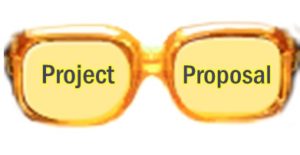Geographical Site
The proposed site for the construction of the bridge is about thirty kilometers south of Aparri, Cagayan. The water current at this point is weak which makes the construction suitable. The bridge is bounded between two national roads. At the right side is an intersection which leads to the eastern part of Cagayan.
The Advantages of a Suspension Bridge
A suspension bridge has its advantages
– The manner of carrying loads is highly efficient since so much of the load is carried by the cable in tension.
– The analysis of the structure is greatly simplified because when a cable supports a load that is uniform per unit length of the cable itself, such as its own weight, it takes the form of a catenary; but unless the sag of the cable is large in proportion to its length, the shape taken may often be assumed to be parabolic
The Construction of a Suspension Bridge
The special design of the suspension bridge does not consider the stability of the river level. It is more resistant than ordinary bridges to earthquakes. A construction of this type of bridge the following general steps:
– Topographic Surveying
One considers the span of the bridge and the soil conditions existing at the site where the bridge has to be constructed.
– Engineering Design
The component parts of the bridge are designed. This is a very complex work which is done by the qualified structural engineer after gathering the necessary data for the design.
– Actual Construction Work
Under this phase of activity which is dependent upon the design made by the structural engineer are the salient structures to be constructed.
The Anchor
The making of the anchor depends a lot on the nature of the soil where it is going to be built. If the soil is sandy, naturally it is not capable of holding too much tension, so that there is the need to drive tubular piles beneath the anchorsheet. These tubular piles consists of a hallow cylindrical steel with concrete and steel bars in it. These will help the anchor in supporting tremendous tension created by the cable. These circumstances are applied to the proposed plan. The western side of the river is sandy while the eastern part is rocky. The anchor consists of steel imbedded in its concrete structure. Its function is to lock the end of the main cable. The making of an anchor needs a lot of time and needs a lot of calculations. It usually takes time to build a certain type structure. When mixed cement is poured to it, it is being filled layer by layer to ensure dryness, perfect dryness. One of the anchors need the aide of the concrete-steel tubular piles.
The Abutments
Side spans and beams are supported by abutments. Again, when the soil is sandy, there is the need to drive tubular piles at its bottom. One of the abutments holds the weight of the main tower.
Towers
The towers are made of a hollow steel box about two meters wide and are joint together by gapless joints. The erection is usually supported by cranes as temporary support. The towers are erected first before the main cable. When the towers are completed, a temporary steel extension is attached at the top which will hold the transporting cables.
Main Cable
The main cable consists of numerous steel strands. The steel strands are transported from one side to the other by the use of the transporting cable. When the number of steel strands is attained, they are tightened by the use of a twisting machine. Sometimes, a catwalk is made from tower to tower. These are temporary hanging ladders from the ground to the top of the tower continuously from tower to tower.
Therefore, transporting materials from one side to the other can be made manually.
Stiffening trusses
The stiffenig trusses are assembled first on the ground before they are carried through the transporting cables. They are rigidly built that when they are attached to one another, they become a giant boom. Aside from their strength, they are supported by vertical cables which are attached to the main cables.
Concreting
When making the concrete road, it is not cemented continuously. It is divided into segments with allowance to avoid cracking when the concrete expands. The concrete is made up of reinforced concrete stabs.
Excerpt from Proposal to Construct a Suspension Bridge to Connect the Province of Ilocos Norte and Cagayan
By: Vener A. Villanueva
 Project proposal is a written document that can be presented to the client or potential sponsor to receive funding or to get approved. It contains the key information about the project being proposed. It includes the necessary steps to accomplish the objectives and solve existing problems as well the milestones to complete the project. Also, it contains the detailed budget which includes the summation of anticipated cost and expenses.
Project proposal is a written document that can be presented to the client or potential sponsor to receive funding or to get approved. It contains the key information about the project being proposed. It includes the necessary steps to accomplish the objectives and solve existing problems as well the milestones to complete the project. Also, it contains the detailed budget which includes the summation of anticipated cost and expenses.